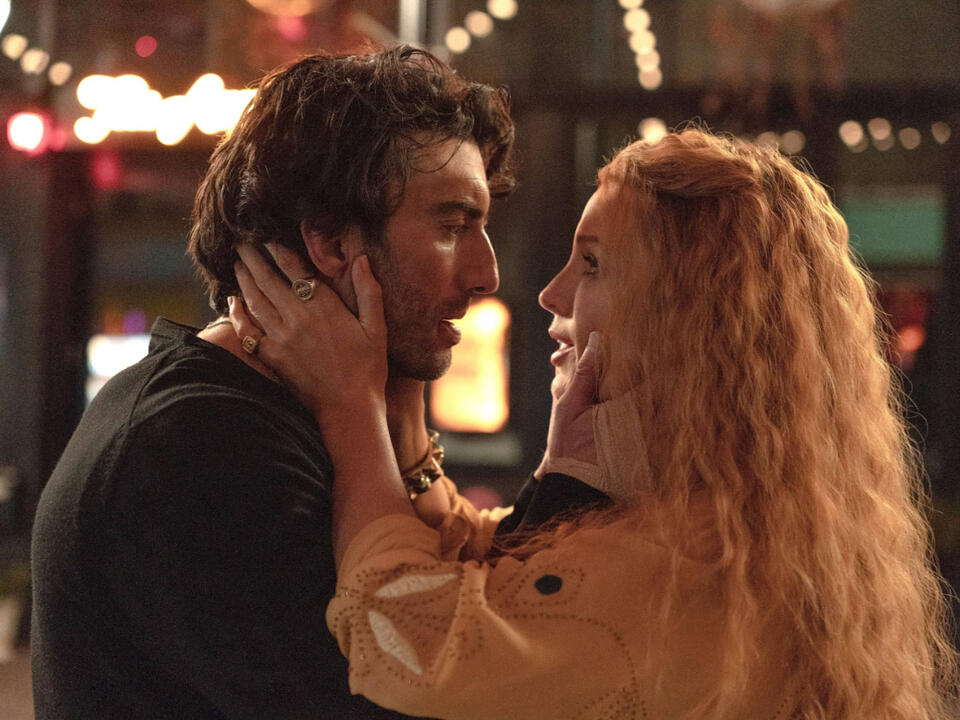Physical Address
304 North Cardinal St.
Dorchester Center, MA 02124
Physical Address
304 North Cardinal St.
Dorchester Center, MA 02124

I and many others waited excitedly for the release of It Ends With Us—the movie adaptation of the widely successful book of the same name by author Colleen Hoover. Even if you haven’t read the book, you’re probably familiar with it thanks to #BookTok.
Movie adaptations of books don’t always meet readers’ expectations, leading to mixed reviews. This is exactly what happened with It Ends With Us after it hit theaters last weekend. This is mostly because die-hard fans (including myself) noticed several differences between the book and the movie. Here are 14 differences between the It Ends With Us movie and the original novel:
Warning: Spoilers ahead!
The movie’s opening scene differed from the book’s beginning pages. The book’s first few pages begin with Lily sitting on the rooftop of a building she doesn’t live in. She had just buried her late father, and it was in the first few pages when she met Ryle. In contrast, the movie opens with Lily back in her childhood home getting ready for her father’s funeral.
Lily’s eulogy to her father was also changed in the movie. In the book, Lily begins to say there isn’t anything good to say about him before a family member removes her. In the movie, she stands up with a crumbled blank napkin that was supposed to have five things she loved about her father. After looking at the blank napkin, Lily rushes out of the funeral.
Furthermore, the characters appear older in the movie compared to how they were described in the book. Lily is 23, Atlas is in his mid-twenties, and Ryle is 30. Colleen Hoover admitted that she aged them wrongly in the book, noting that a 20-something neurosurgeon is unrealistic.
How and when Lily told Ryle about her father abusing her mother differs from the book and the movie. In the book, Lily’s first “naked truth” to Ryle, on the rooftop, was about her parents’ abusive relationship. In the movie, she tells him much later after they start dating.
Another significant difference is Lily’s living situation. In the novel, she has a roommate named Lucy, but in the movie, there’s no mention of Lucy, and Lily is seen alone in her apartment.
The name of Atlas’ restaurant was also changed. In the book, he names it Bib’s after the magnet that said “Better in Boston.” In the movie, it’s called Roots, which refers to Lily teaching Atlas about plant roots in their youth. Colleen explained the name change was due to limited screen time.
Ryle’s proposal to Lily is also markedly different. In the movie, Ryle proposes in the hospital room without a ring, just after realizing he wants to spend his life with her. In contrast, they elope in Vegas in the book.
Moreover, in the movie, Ryle’s sister Allysa is the one who tells Lily about Ryle’s brother’s death. In the book, Ryle shares this himself as a reason for his abusive behavior, which Lily initially forgives, leading them to work on controlling his anger together.
Some domestic violence scenes were portrayed differently in the movie compared to the book. A key moment is when Ryle burns his hand; in the book, he pushes Lily to cool off under the sink, while in the movie, he shoves her right after touching the hot surface. Another scene with differences is when Ryle pushes Lily down the stairs. In the book, she kicks him out and he sleeps in the hallway. In the movie, she wakes up groggy with Ryle taking care of her.
Lily’s journal entries to Ellen DeGeneres are missing entirely from the movie. In the book, these entries play a significant role in her life and relationship with Atlas.
Allysa’s role in advising Lily about her relationship with Ryle is also different. In the book, she doesn’t tell Lily not to take Ryle back, but in the movie, she does.
In the novel, Lily and Ryle didn’t know the baby’s gender until birth. Finding out she had a girl prompted Lily to ask for a divorce to end the cycle of domestic violence. In the movie, she knows beforehand that she’s having a girl but still asks for a divorce after giving birth.
The movie also omits the mention of the baby’s middle name. In the book, Lily names her daughter Emerson Dory, with “Dory” as a nod to Ellen DeGeneres’ character in Finding Nemo. The movie only mentions Emerson.
The movie ends on what feels like a cliffhanger. In the book, after meeting Atlas, Lily tells him her daughter’s middle name story and states she’s ready to be loved again. It concludes romantically with Atlas kissing Lily’s heart tattoo, signifying they’ve finally reached the shore. The movie, however, ends more ambiguously with Lily and Atlas running into each other casually with no romantic conclusion.
Did you notice any other differences between the book and the movie? If I missed anything, share it with me in the comments below!
If you or someone you know is in immediate danger due to domestic violence, call 911. For anonymous, confidential help, call the 24/7 National Domestic Violence Hotline at 1-800-799-7233 (SAFE) or chat with an advocate via the website.
Source: Sony Pictures Releasing, Everett Collection, E! News, Today, Deadline



